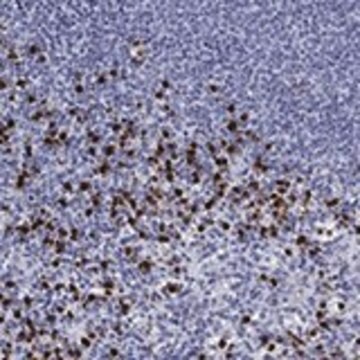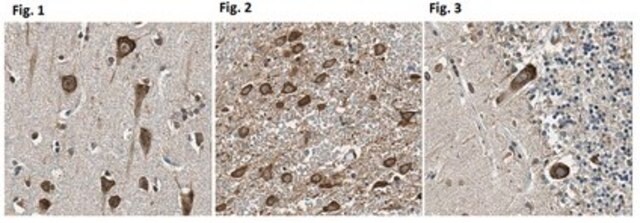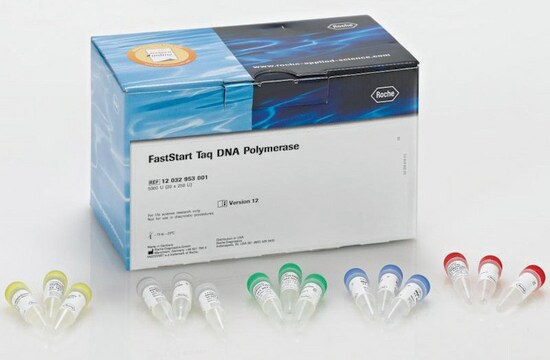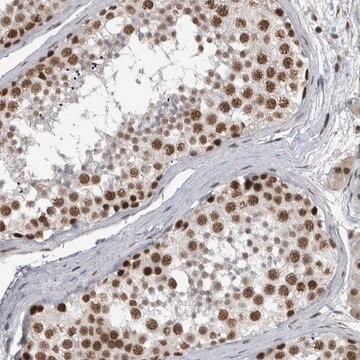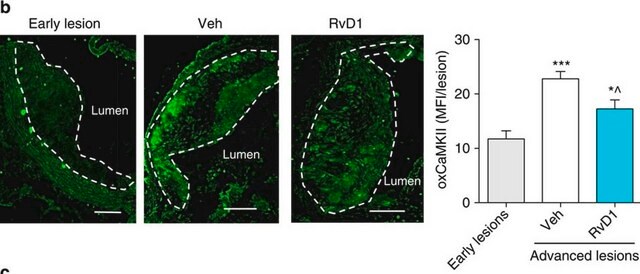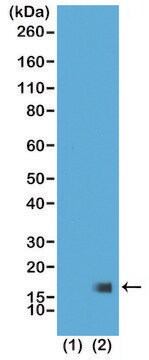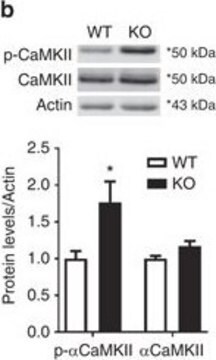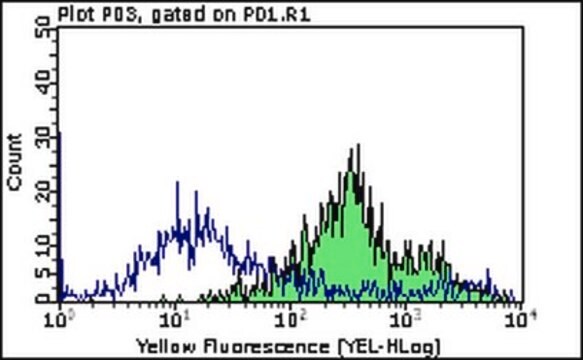MAB16985F
Przeciwciało anty-MCAM, klon P1H12, sprzężone z FITC
clone P1H12, Chemicon®, from mouse
Synonim(y):
MUC18, CD146
About This Item
Polecane produkty
pochodzenie biologiczne
mouse
Poziom jakości
białko sprzężone
FITC conjugate
forma przeciwciała
purified immunoglobulin
rodzaj przeciwciała
primary antibodies
klon
P1H12, monoclonal
reaktywność gatunkowa
canine, mouse, human
spodziewany brak reakcji z
rat
producent / nazwa handlowa
Chemicon®
metody
flow cytometry: suitable
izotyp
IgG1
numer dostępu NCBI
numer dostępu UniProt
Warunki transportu
wet ice
docelowa modyfikacja potranslacyjna
unmodified
informacje o genach
human ... MCAM(4162)
Opis ogólny
Specyficzność
Immunogen
Zastosowanie
Immunohistochemia: 1-10 μg/ml. 4% PFA przez 30 minut RT lub <2 godziny @4°C. Blokować w 1%BSA/0,2%tween20/PBC przez 30 min. Działa dobrze w zamrożonej tkance; utrwalony lub nieutrwalony.
Analiza Facs: 1-10 μg/ml
Optymalne rozcieńczenia robocze i protokoły muszą być określone przez użytkownika końcowego.
Cell Structure
Adhesion (CAMs)
Postać fizyczna
Przechowywanie i stabilność
Komentarz do analizy
Komórki HUVEC
Inne uwagi
Informacje prawne
Oświadczenie o zrzeczeniu się odpowiedzialności
Nie możesz znaleźć właściwego produktu?
Wypróbuj nasz Narzędzie selektora produktów.
Kod klasy składowania
12 - Non Combustible Liquids
Klasa zagrożenia wodnego (WGK)
WGK 2
Temperatura zapłonu (°F)
Not applicable
Temperatura zapłonu (°C)
Not applicable
Certyfikaty analizy (CoA)
Poszukaj Certyfikaty analizy (CoA), wpisując numer partii/serii produktów. Numery serii i partii można znaleźć na etykiecie produktu po słowach „seria” lub „partia”.
Masz już ten produkt?
Dokumenty związane z niedawno zakupionymi produktami zostały zamieszczone w Bibliotece dokumentów.
Nasz zespół naukowców ma doświadczenie we wszystkich obszarach badań, w tym w naukach przyrodniczych, materiałoznawstwie, syntezie chemicznej, chromatografii, analityce i wielu innych dziedzinach.
Skontaktuj się z zespołem ds. pomocy technicznej